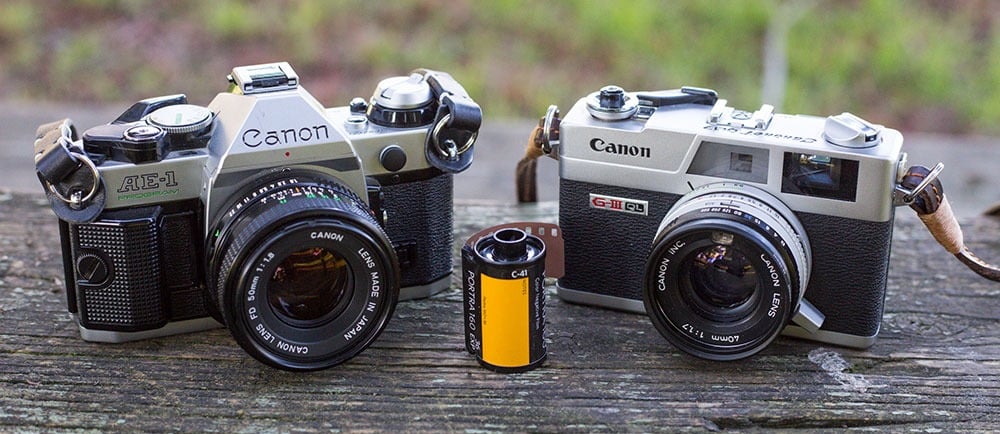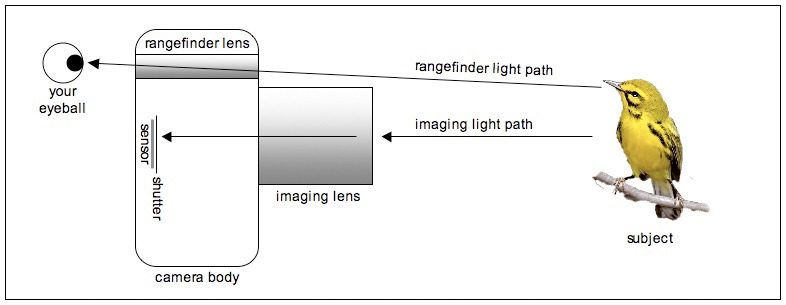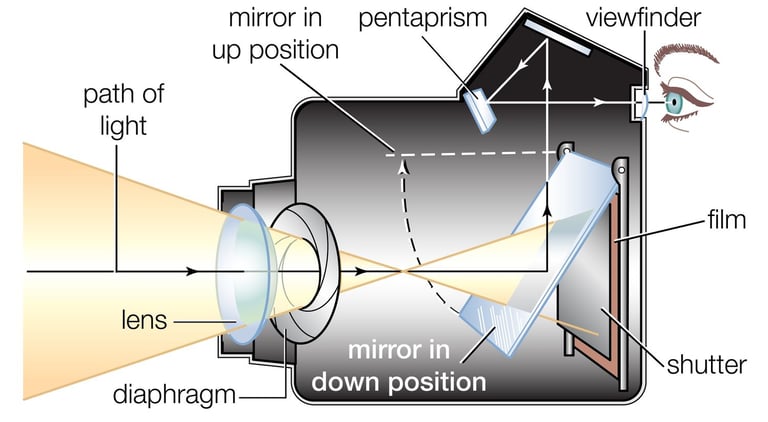SLR vs. Rangefinder
Which is the right film camera for you?
Miles Moreira
12/5/20244 min read


While most digital cameras nowadays are mirrorless and has its sensor being close to the lens as possible, a novice to film photography can see an array of camera types such as Single Lens Reflex (SLR) and Rangefinders, and even Twin Lens Reflex (TLR) for medium format cameras. But for our new 35mm format photographers, let’s go over what makes each type of camera, their uses, and which one is right for you.
Rangefinders
A rangefinder camera works by using a coupled optical system to help focus on your shot. Essentially, they use a separate viewfinder and a focusing system that measures the distance. So when you’re looking through the viewfinder, you can see two images, then by using the focusing system, you shift the images on top of each other to focus on your subject. These cameras are used by more experienced photographers and by people who like to have an easy and quick style of shooting their photos.
Pros:
Compact and Lightweight: Rangefinders are the perfect camera for street and travel photographers who have a more run-and-gun shooting style. Without the internal components like the SLR, rangefinders are built for someone who’s looking to take a bunch of quick photos on the go with much less fatigue. An absolute favorite is the Petri Racer as its an inexpensive, lightweight option that has a front-of-camera shutter button that is ergonomically useful for taking a bunch of photos on the go.
Quieter Shutter: Since there is no mirror inside, the camera only fires off the shutter. This is ideal for candid photos on the street or for someone who rather not hear the loud slap inside of the camera.
Sharper and Wider Pictures: Rangefinder lenses are often smaller and sharper and since there is no mirror, the lens is closer to the shutter curtain and the film. This creates a more wider view and allows more of the film plane to be exposed in creating an image,
Cons:
Limited Lens Options: Rangefinders are often built with the lens, making it undetachable for other lenses. And even when they do, such as a Leica, these cameras and lenses are quite expensive. And even then, the lenses available are most prime lenses and hardly offer any telephoto ones.
Separate viewfinder: Due to its design, you’re using a different focusing mechanism that doesn’t allow you to see what will be exposed unlike a SLR. This makes framing less accurate for close-up shots.
No Autofocus: Rangefinders are fully manual, which aren’t exactly ideal for beginners or for capturing fast-moving subjects. However, shooting manual on a rangefinder is easier than shooting manual on a SLR.
Conclusion
So to answer the question which is right for you, it really depends on your use. For beginners and photographers who are shooting more professionally or want to get that framing correct, SLRs are the way to go. And for photographers who want to shoot on-the-go and take those candid photos, rangefinders are the one for you. Ultimately, there really isn’t a wrong option as long as you’re having a great shooting experience.
If you enjoyed this article, join our blog newsletter and follow us on instagram @cinescope.visuals for more tips, announcements, and to be part of our photography community!
Single Lens Reflex
SLRs work by using a mirror and prism system to allow you to see through the lens directly. And when it’s time to take a photo, the mirror will slap up and the shutter will fire, allowing the light to come through the lens and expose onto the film. These types of cameras are often used for professional use but are also a great way for beginners to learn film photography as most of these cameras come equipped with auto mode and metering system to determine the proper exposure, allowing for a seamless shooting experience.
Pros:
Precise Framing: Since the SLR system allows you to look directly through the lens when composing your shot, you’re more in control with how the framing looks for your picture. This comes extremely helpful when focusing on close-up shots, portraits, and studio shoots.
Interchangeable Lenses: Unlike most rangefinders, SLRs are very versatile with their ability to swap lenses. This allows you to shoot any type of shot you want, using telephoto and prime lenses alike, varying in different apertures as well. This versatility is what makes SLRs rather more popular since many different types of photographers can customize them to their liking.
Autofocus options: More advanced SLR cameras have an autofocus system built-in, making the shoot much more easier and beginner-friendly. A great example for all these traits would be the Nikon F3 series, having said autofocus but one an array of high-quality lenses.
Cons:
Weight: SLRs are larger and heavier than rangefinders, due to their inner mechanisms such as the light meter and mirror inside. Though it might not seem as heavy at first, wearing them on a neck strap over a long period of time can wear you down and even more so if you’re using a heavy lens.
Mirror Slap and Viewfinder Blackout: The slap of the mirror to expose the film can cause some shakiness, but this is more prevalent in long exposures. But the viewfinder blackout from the mirror slap can leave a photographer without sight of its subject for a brief moment, which can bring some worry on what has been shot.
More Maintenance: Due to the inner mechanisms previously mentioned, these parts can wear down over time, requiring maintenance and a little more TLC from time to time. This can be even more important if you are using a camera that has an electronic shutter instead of a mechanical shutter, which often needs to be professionally fixed should the electronic components become compromised.



